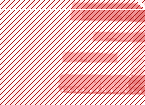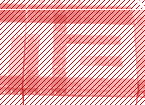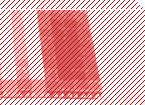| |
|
|
|
|
||
|
||||||||||||||||||||
| |
|
|||||||||||||||||||||||||||||
|
 |
 |
 |
|
||||||||||||||||||||||||||
| The Art of Code Roy Ascott (UK) Richard Kriesche (AT) Casey Reas (US) Giaco Schiesser (CH) Roman Verostko (US) Brucknerhaus 07.09. 15:00 | ||||||||||||||||||||||||||||||
What effects is digitization having on art? What special characteristics are displayed by code-based art? And how does this inherent, uniquely self-determined expressive vocabulary of digital art manifest itself? What consequences will art as code-according to Kriesche, alone the generative answer to the complete permeation of all partial realities-have for the ongoing development of the arts? In which direction is artists' work with new instruments like algorithms and dynamic systems transforming the process of artistic creativity? Or is the concentration on CODE, this focus on the immediate basis of the technological transformation of art, proceeding along the wrong path, and should the confrontation with media art concentrate on social approaches-collaborative, social modes of action, the potential of connective interfaces-without which there can be no productive and uniquely self-determined human activity? Moderation: Roy Ascott 15:00 - 15:30 Giaco Schiesser
Richard Kriesche (A), born 1940, worked as professor already in the 60s within the area of audiovisual media. In 1969 he founded the art society “pool” and four years later the media gallery “poolerie” for photography, film and video. Since the end of the 80s Richard Kriesche held several teaching posts, among others for the Technical University Vienna and the École supérieure des beaux arts in Paris. Kriesche serves an an expert in several European commissions. Casey Reas (USA) is an associate professor at the newly established Interaction Design Institute Ivrea in northern Italy. With Ben Fry of the MIT Media Lab, he is currently developing "Processing", a platform for learning fundamentals of computer programming within the context of the media arts. Reas' work explores kinetic systems through diverse digital media including software art, prints, animation, installations, and responsive sculpture. Giaco Schiesser is a full-time professor for the theory and history of the media and culture with the focus on Media Culture Studies as well as head of the department Media & Art at the University of Art and Design Zurich (Hochschule für Gestaltung und Kunst Zürich, HGKZ). Roman Verostko (USA), artist, historian, and MCAD Professor Emeritus, was born in 1929 in the coal fields of Western Pennsylvania (USA). As a child he made his first paintings using a mail-order paint set. In the early 1980's, following 30 years of painting, he began executing algorithmic drawings with a pen plotter.. Today his studio includes a network of computers coupled to pen plotters driven with his own original software. By 1987 he created the world's first software driven "brushed" paintings with oriental brushes mounted on his pen plotter. His studio integrates coded digital procedure with fine arts traditions. |
||||||||||||||||||||||||||||||
| © Ars Electronica Linz GmbH, info@aec.at | ||||||||||||||||||||||||||||||